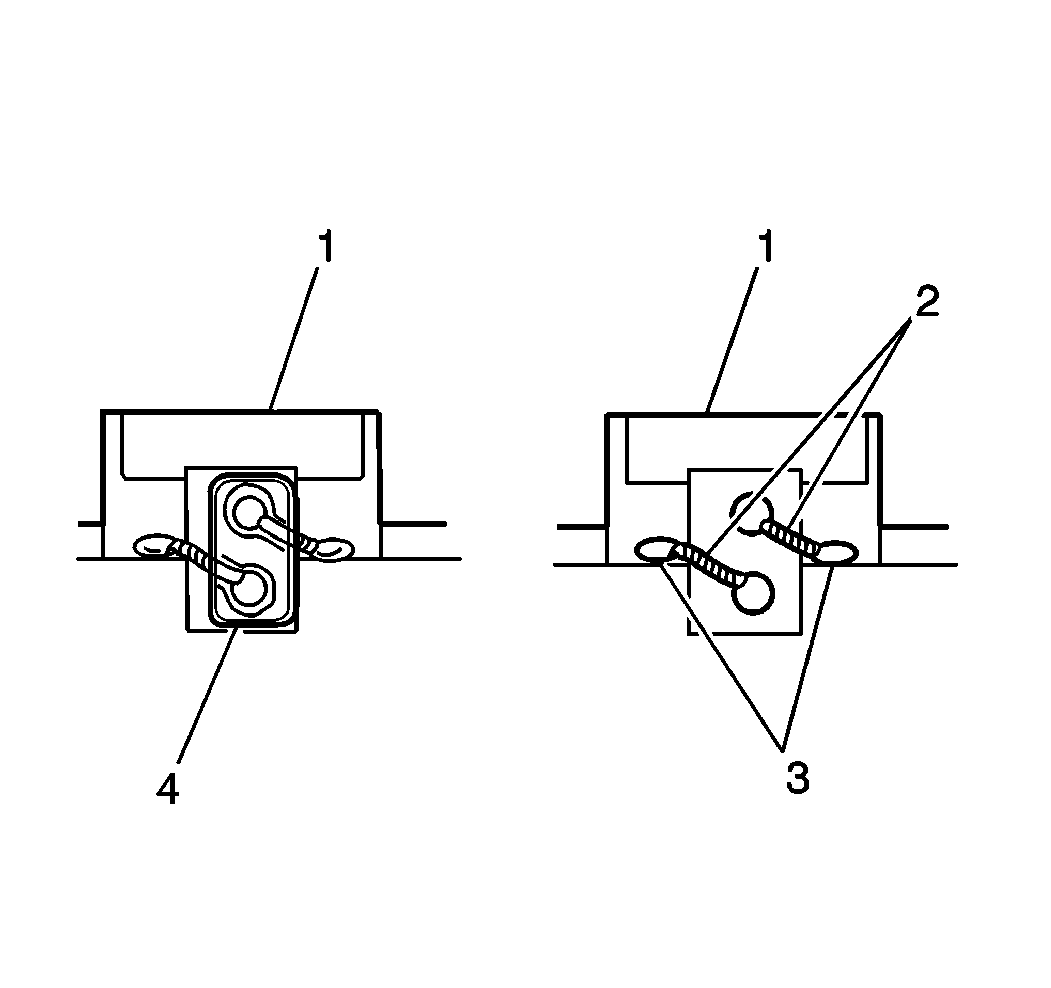Tools Required
J 39200 Digital Multimeter
Usually, characteristics of a battery that is not charged adequately
are slow cranking or a dark battery hydrometer. If this condition exists,
check the following items for a cause:
- Determine that the undercharged condition has not been caused
by leaving accessories on for extended periods without charging the battery.
- Check the drive belt for correct tension. Refer to
Drive Belt Replacement
1.0L or to
Drive Belt Replacement
1.3L in Engine Mechanical.
- If a battery fault is suspected, refer to
Battery Load Test
.
- Inspect the wiring for faults:
| • | Verify that all connections are clean, tight, and not damaged. |
| • | Inspect the battery cable connections at the battery, at the starter
and at the engine ground points. |
| • | Inspect the bulkhead connectors. |

- With all accessories turned
off, connect a J 39200
across the battery. Run the engine at a moderate speed, and check the voltage,
considering the temperature that the generator is exposed to during the test.
When the temperature of the regulator case (2) in the generator increases,
the voltage output (1) will decrease. The standard regulator voltage
setting is 14.4 to 15.0 volts at 20°C (68°F). The minimum operating
voltage should be 13.5 volts. If the voltage is at 13.5 volts
or more, proceed to the next step. If the voltage is less than 13.5 volts,
repair or replace the generator. Refer to
Generator Overhaul
or to
Generator Replacement
.
- If the previous steps have not produced satisfactory results,
perform the following generator test.
| 6.1. | Disconnect the negative battery cable. |
| 6.2. | Remove the rubber protection, the nut, and the generator battery
terminal wire. |

| 6.3. | Connect an ammeter (1)
between the generator (2) and the disconnected wire. Connect the ammeter black
lead to the wire and the ammeter red lead to the generator battery terminal. |
| 6.4. | Connect a J 39200
(3) between the generator battery terminal and chassis ground. |
| 6.5. | Start the engine, and run the engine at 2000 RPM. Turn all accessories
and high-beam headlamps on. Turn the blower to HIGH. Ground the generator
F terminal with a screwdriver. |
| 6.6. | Adjust the engine speed in order to obtain the maximum current
output. |
| 6.7. | If the current output is within 10 amperes of the maximum
rating, and the voltage reading is 13.5 to 16.0 volts, the generator
is not faulty and is not the cause of an undercharged battery condition. Refer
to
General Specifications
.
If the current output is not within 10 amperes of the maximum rating,
or the voltage reading is less than 13.5 volts, repair or replace the
generator. Refer to
Generator Overhaul
or to
Generator Replacement
. |
If an obvious overcharge condition exists, such as spewing of the electrolyte,
test the field windings for shorts and for grounds. If the field winding is
faulty, replace the rotor, and retest the generator for correct voltage output.
Refer to
Generator Replacement
and to
Generator Overhaul
.
On Vehicle Voltage Regulator Test
- Connect a fast charger and a J 39200
to the battery.
- Turn the ignition switch to the ON position, and slowly increase
the charge rate. The indicator in the vehicle will begin to dim when the voltage
setting is reached. The indicator should dim at 13.5 volts to 16.0 volts.
If the test results are not satisfactory, replace the voltage regulator. Refer
to
Generator Replacement
and
to
Generator Overhaul
.
Off Vehicle Voltage Regulator Test
- Remove the generator from the vehicle. Refer to
Generator Replacement
.
- Remove the voltage regulator from the generator. Refer to
Generator Overhaul
.
- Connect a J 39200
and a fast charger to a 12-volt battery that is completely charged
.
- Connect the voltage regulator battery terminal to the battery
positive terminal.

- Connect a test lamp across
the voltage regulator rotor terminals (3). If the test lamp lights,
proceed to the next step. If the test lamp does not light, replace the voltage
regulator.
- Turn the fast charger on. Observe the J 39200
. The test lamp will begin to dim when the voltage regulator
setting is reached. The test lamp should turn out at 13.5 volts to
16.0 volts. If the test results are satisfactory, the voltage
regulator is serviceable and should be reinstalled on the vehicle. If the
test results are not satisfactory, replace the voltage regulator.
The test lamp is connected into the circuit in the same way that the
rotor would be connected into the circuit when the regulator is inside the
generator. The regulator interrupts the current to the test lamp when the
regulator voltage setting is reached. This voltage will vary slightly
with temperature variations.



